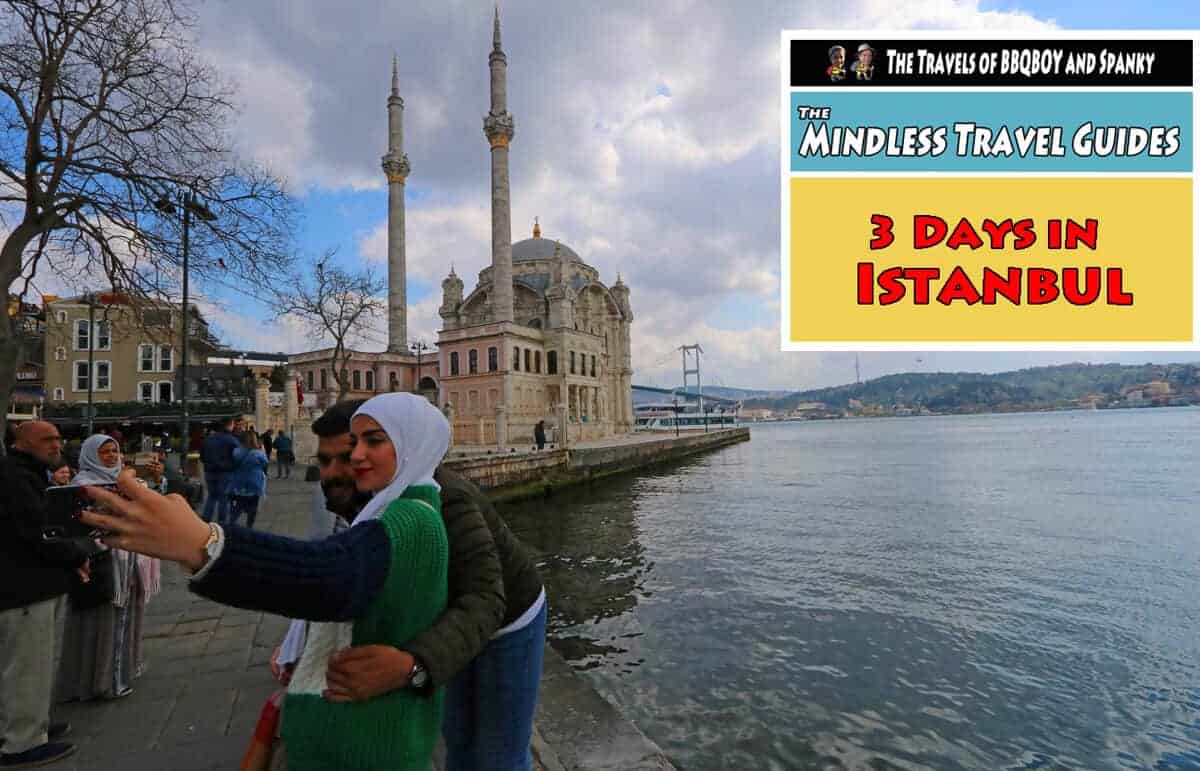 3 Days in Istanbul.
3 Days in Istanbul.
Istanbul is an exciting, hectic place full of color and life. We spent a week here but for the sakes of this guide I’ve compiled the highlights and built them around a 3 day itinerary.
Get ready because I’m packing a lot of stuff into these 3 days. And because this is a “Mindless Guide“ I’ve planned it all out for you: the itinerary, where to stay, where to eat, how to get around…
Where to Stay in Istanbul
There’s no doubt that the best area to stay in is Sultanahmet. Here you are in walking distance to all the major sites. High end: Ajwa Hotel Sultanahmet and Four Seasons Hotel Istanbul at Sultanahmet. Med-range: Yılsam Sultanahmet Hotel and The Magnaura Palace Hotel.
If you can’t stay in Sultanahmet (which is more expensive than other parts of the city) then stay somewhere along the T1 tram line. The tram is great and you’ll get to the center quickly. Good-value: Hanna Hotel and the Istasyon Hotel (which has great views from the terrace).
What to See during your 3 days in Istanbul
Above: The main highlights in Istanbul
Day 1. Seeing the Sights in Sultanahmet (the old center)
1. Hagia Sophia
2. Blue Mosque
3. Basilica Cistern
4. Topkapi Palace
5. The Hippodrome
The above are Istanbul’s most famous sights and all are located in Istanbul’s old center, Sultanahmet. They’re so close to each other you can visit in any order.
Hagia Sophia
Istanbul’s highlight attraction. When originally built in 537 AD it was a Greek Orthodox Church. When the Ottomans (under the rulership of Mehmet the Conqueror) seized Constantinople from Byzantine rule in 1453, it was converted to a mosque. It is an incredible building and was the largest Cathedral in the world for 1000 years (until Seville Cathedral was built in 1520).
Blue Mosque
After Hagia Sophia, this is the most recognized building in Istanbul. Built between 1609 – 1616, it dominates Istanbul’s skyline with its domes (5 large, 8 smaller) and 6 minarets. Why is it called the Blue Mosque? It’s because of the hand-painted blue tiles that adorn the mosque’s interior walls. Unfortunately it was undergoing massive restorations during our visit.
Basilica Cistern
This cistern, built as a reservoir of water under the ground, was built in the 6th century under the commands of the Byzantine emperor Justinian. It is incredible: a space of 9,800 square meters (105,000 square feet) capable of holding 80,000 cubic meters (2,800,000 cubic feet) of water). The ceiling is held up by 336 marble columns, each 9 meters (30 feet) high. The 2 upside-down Medusa Columns are the best known of the columns – the origins are unknown and were probably taken from a Roman-era building. It’s a phenomenal accomplishment and you’ll be amazed walking through this huge underground waterworld.
Eat: The Terrace Restaurant Cafe is very close to the Basilica Cistern and has incredible views of the Blue Mosque. It serves Turkish food and quality is good – but the main reason to go are the views (make sure to go up to the Top floor). Tripadvisor reviews of The Terrace Restaurant Cafe.
Topkapi Palace
The Topkapi Palace was home to the Ottoman Sultans until the middle of the 19th Century. Building started in 1460 and it took 18 years to complete. With time other pavilions were added – it grew to 700,000 square meters and was home to 4000 people at one point.
It was from the Topkapi Palace that Sultan Mehmet the Conqueror ran the Ottoman empire. Besides the attractions in the palace (there are some priceless exhibits and the Haram is everyone’s highlight) the Palace has a great location looking out over the the Bosporus.
Note: the Topkapi Palace is very popular. It’s best to pre-book your tour.
The Hippodrome
Located right next to the Blue Mosque, the Hippodrome was an oval shaped racetrack where sports (like chariot races) and cultural events were held. It dates back to 324 AD (during the time of the Byzantine empire when the Hippodrome was the center of social life in the city. At the time it was lined with statues and monuments. Unfortunately not much of all that is left as many monuments were destroyed and/or plundered during the Crusades. There are just a few monuments, like a Serpent Column (dating from the 5th century) and several Obelisks (one, dating from the ancient Egyptians, is estimated to date from 1490 BC).
Eat: Matbah is the place to go for a special meal. Traditional Ottoman cuisine in a beautiful restaurant looking over Hagia Sophia. Matbah website.
Day 2 – a full-day do-it-yourself walking tour
1. Grand Bazaar
2. Suleymanie Mosque
3. Spice Market
4. Galata Bridge
5. Galata Tower
6. Istiklal Street
7. Taksim Square
You’ll do a lot of walking on this 2nd day, you’ll be surprised though how manageable Istanbul. It’s not a difficult place to get around on foot and you’ll walk through some interesting neighborhoods while also catching some great views of the Bosporus.
Grand Bazaar
A huge covered market (with about 4000 stores) where you’ll see all the kind of goods you’d expect to see in Turkey (carpets, lamps, ceramic plates, sweets…). But it’s not just the things that are for sale – the market building was built over 500 years ago and has columns, vaults, porticos, and marble fountains along its 61 “streets”. It’s just a remarkable place to wander around and take some photos.
Suleymanie Mosque
The 2nd largest mosque in Istanbul, built under the rule of Süleyman the Magnificent in 1550. The interior is colourful and light with its many stained-glass windows. Located on a hill, the mosque has wonderful views over Istanbul and the Bosporus strait.
Spice Market
This market (located right next to the Galata bridge) is full of colour and smells and, like the Grand Bazaar, has covered stalls built in a historical building. A great place to pick up spices and teas that you’ll have a hard time finding anywhere else.
Eat: BirBen Restaurant near the Spice Market. Traditional Turkish food at good prices. Tripadvisor reviews of BirBen Restaurant.
Galata Bridge
The historic link between Old Istanbul and New Istanbul on the other side of the strait. You’ll see ferries and cargo ships making their way across the Bosporus and fishermen casting their lines off the edge of the bridge. There are great views in every direction. The Galata Bridge is where you really feel the life of Istanbul.
Galata Tower
Located across the river, the tower was built by the Genoese in 1348 and was at the time the highest building in Istanbul. It has great views of the whole city (which was the goal: it was built as on observation tower). Note: there is always a line up to get in. Come early. The good thing is that there’s an elevator to take you to the top.
Istiklal Street
A large pedestrian street that’s 1.4 kilometers long and lined with shops, cafés, restaurants as well as some churches (the most impressive being Saint Anthony of Padua church). It is one of Istanbul’s most famous avenues and has interesting buildings (in European architectural styles). If you get tired of walking you can hop on the historical tram which will take you to Taksim Square.
Taksim Square
One of Istanbul’s most famous squares. There’s a large monument (the Republic Monument built to commemorate the formation of the Turkish Republic in 1923). It’s not the most beautiful square and we actually thought it was an eyesore. But if you’re walking on Istiklal Street from the Galata Tower it makes for a good ending point to your walk (and to Day 2 of this Guide). From the square you can take the metro back to your hotel.
Eat: Back in Sultanahmet, try Balıkçı Sabahattin. It’s a family run restaurant on a side street behind the Hagia Sophia and the Blue Mosque. It’s specialty is seafood and it has a reputation as one of Istanbul’s top seafood restaurants. Balıkçı Sabahattin website.
Day 3 – on the Bosporus & the Walls
1.Ortaköy Mosque
2.Dolmabahçe Palace
3.Panorama1453 Museum
Day 3 includes two fantastic highlights on the Bosporus…and a further site which is easy to get to on the tram.
Ortaköy Mosque
It’s a bit far to get to (requiring a combination of tram and bus) but the mosque is magnificent and the setting along the Bosporus impressive. It was built in 1856 and is a rare example of Baroque architecture in Istanbul. Make sure to go in the mosque as many people skip that (or don’t realize they can go in).
The area around the mosque is full of cafés and restaurants. This is the place to come for a Kumpir (a baked potato in which they stuff anything you want. Quite good).
Note: take the T1 tram to it’s last stop: Kabatas Tramvay Istasyonu. From there take a 15 minute bus ride to Ortakoy (many buses go there including the 22 and 22B).
Above: a Kumpir
Eat: Have a Kumpir at one of those small restaurants in Ortaköy. Most have indoor seating areas. Just tell them you want a Kumpir and point to the ingredients that you want in your Kumpir (it’s no more complicated than ordering at Subway). Super cheap meal and you’ll be full the rest of the day.
Dolmabahçe Palace
This is the largest palace in Turkey, built between 1853 – 1856 as a more modern home to Istanbul’s sultans (who’s previous residence had been the Topkapi Palace). It is a very European-style palace with some incredible rooms and gardens. It is a huge palace and you might be confused by the different tours on offer (take the Palace Tour which costs 60 Lira). Note: you’re not supposed to take photos in the palace. I did and got yelled at.
Panorama 1453 Museum
The highlight of this museum is the 360 panorama depicting the fight for Constantinople between the Turks and the Byzantines in 1453. The history is interesting (although biased towards the Turks) and gives a you a background to the Ottoman conquest of the city. Just outside the museum you’ll also see some of the famous city walls depicted in the panorama (the city walls used to surround all of Constantinople).
Note: you might find it far from the first two of my Day 3 sites…but from the Dolmabahçe Palace all you need to do is take the tram (from Kabatas Tramvay which is about 15 minutes walk from the palace) all the way to the Topkapi Istasyonu stop. That takes about 40 minutes. From there it’s a few minutes walk to the museum.
Eat: Deraliye Osmanli Saray Mutfagi. A fantastic restaurant serving traditional Ottoman cuisines, one of Sultanahmet’s best restaurants. Website of Deraliye Osmanli Saray Mutfagi.
Getting Around in Istanbul
The tram is the best way and the T1 tram line will take you to most of the sites above (or close enough that you can walk to them).
Get yourself an Istanbul Kart. You’ll find them in kiosks near metro stations, trams lines, and bus stops. It’s a rechargeable card and you should calculate how many trips you need on it (if you’re 2 or 3 people you can share it, just double up/triple up when calculating the number of trips). Just remember that you’ll be charged for a different trip when transferring between different modes of transport.
Getting from the Airport(s) to downtown
Istanbul’s airports are a bit out of the city and combined with bad traffic and poor public transport (by most standards) are a hassle to get to/arrive from. Plan on 2 hours (worst case) to get from the airports to Sultanahmet.
The main airport in Istanbul is Istanbul New Airport. Airport code IST. The best and cheapest way to get downtown is by bus. Go down to level -2. There you can buy the Istanbul Kart mentioned above. You can take a Havaist bus which will cost 204 TL (about $6 Euros) and take 1.5 – 2 hrs to get to Sultanahmet.
Otherwise pre-arrange a private transfer (or, worst case, a taxi). It will take about an hour to get to Sultanahmet and should cost about 1440 TL (about $38 US).
More here on getting into Istanbul from Istanbul New Airport.
The 2nd airport is Sabiha Gökçen Airport which is the hub for Pegasus Airlines (a great budget airline). You can get there from Sultanahmet but honestly it’s a lot of trouble (requiring ferry and bus).
Better off pre-arranging a transfer or taxi. Cost should be about 1630 TL (about $43 Euros) and take about 90 minutes.
Free Tour if…
If you are are flying to Istanbul internationally on Turkish Airlines and have a 6 to 24 hour layover, you are entitled to a free tour of Istanbul. See more here.
Otherwise, here are tours worth taking
My 3 Day itinerary is self-guided and with all the transport info, restaurants etc you can do it on your own. But some people have specific interests and want more detail. In some cases tours save you from waiting in lines. If so, here are some recommended Tours.
Topkapi Palace and Harem tour with Guide. Topkapi Palace is the one place I really think you should pre-book your tour. Very much recommended.
A Full-day Istanbul tour. You’ll see Hagia Sofia, the blue Mosque, the Hippodrome, Grand Bazaar and the Şerefiye Cistern.
Hop On, Hop Off Bus Tour. 24 to 72 hours, this is a fun way to see the city and get to the sights.
Related: Turkey Travel Guide: Where to Go and What to Do
Related: What to see (and what to skip) in Istanbul
Related: 3 Days in Prague
If you find our blog helpful, please consider using our links to book your flights, hotels, tours, and car rentals. Have a look at our Travel Resources page.

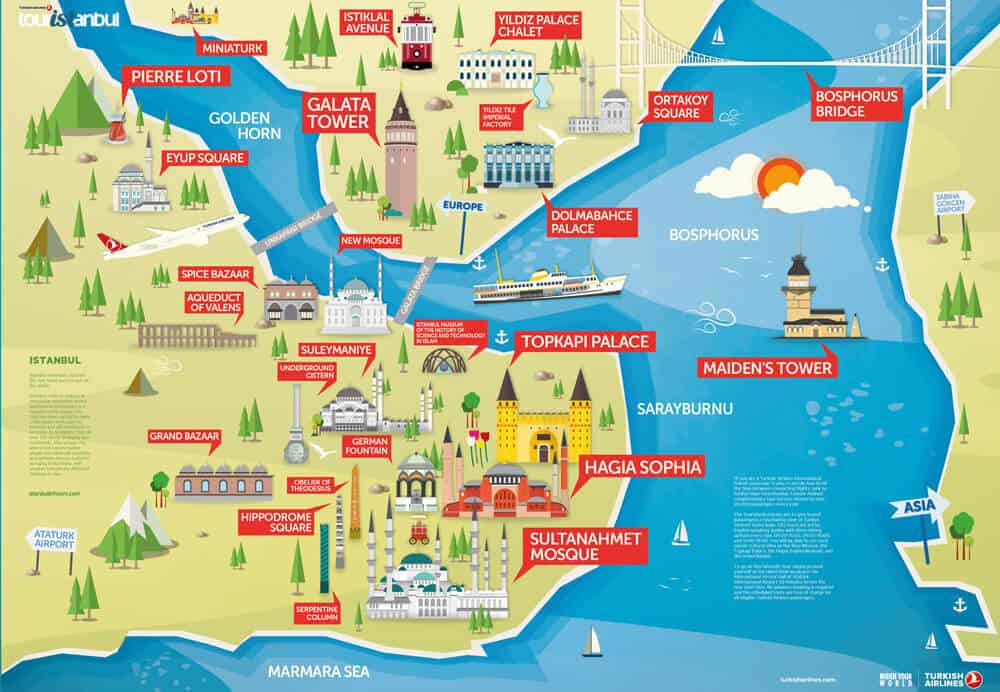
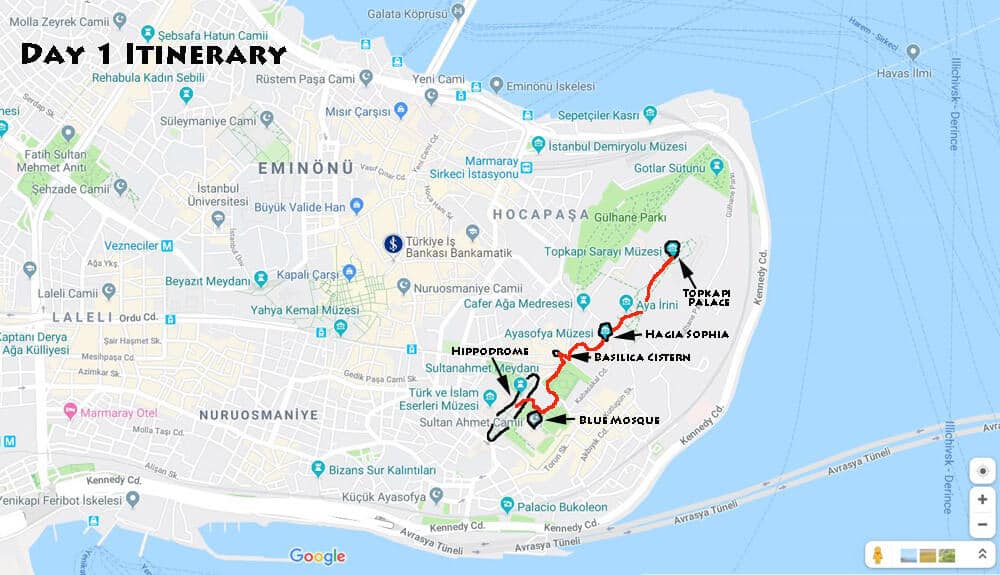

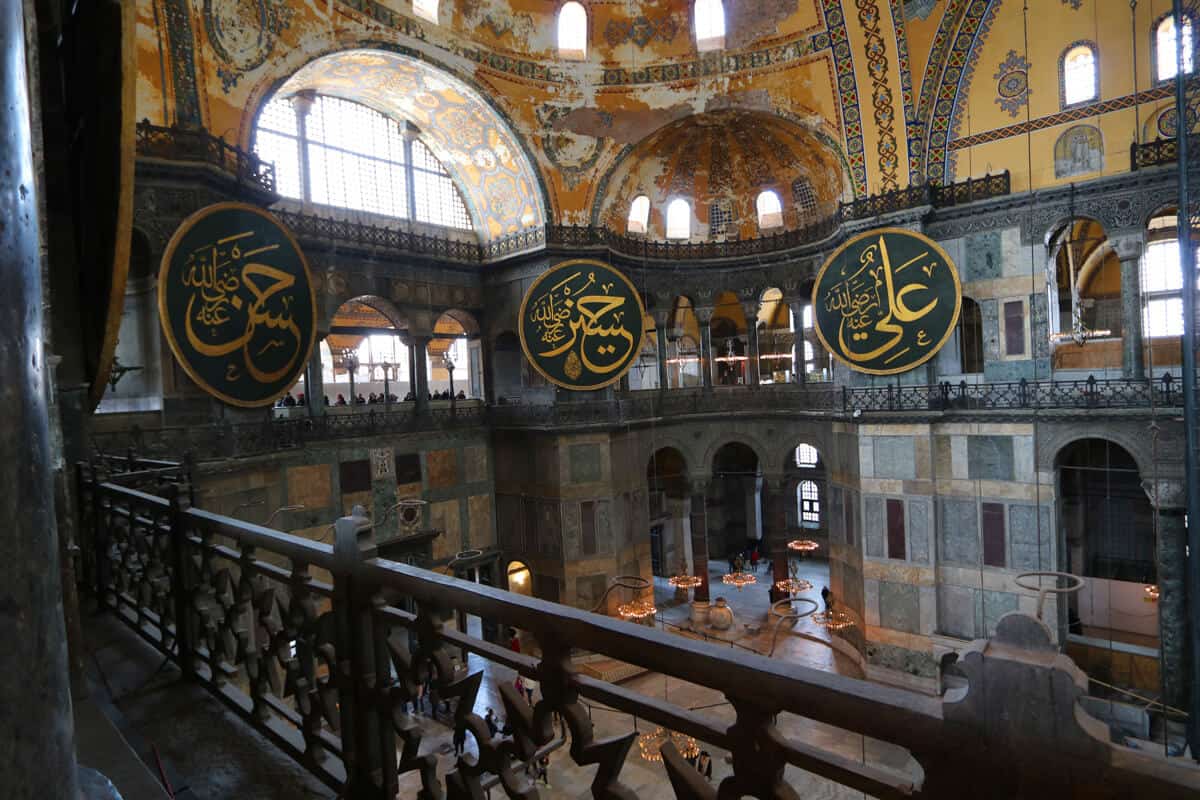
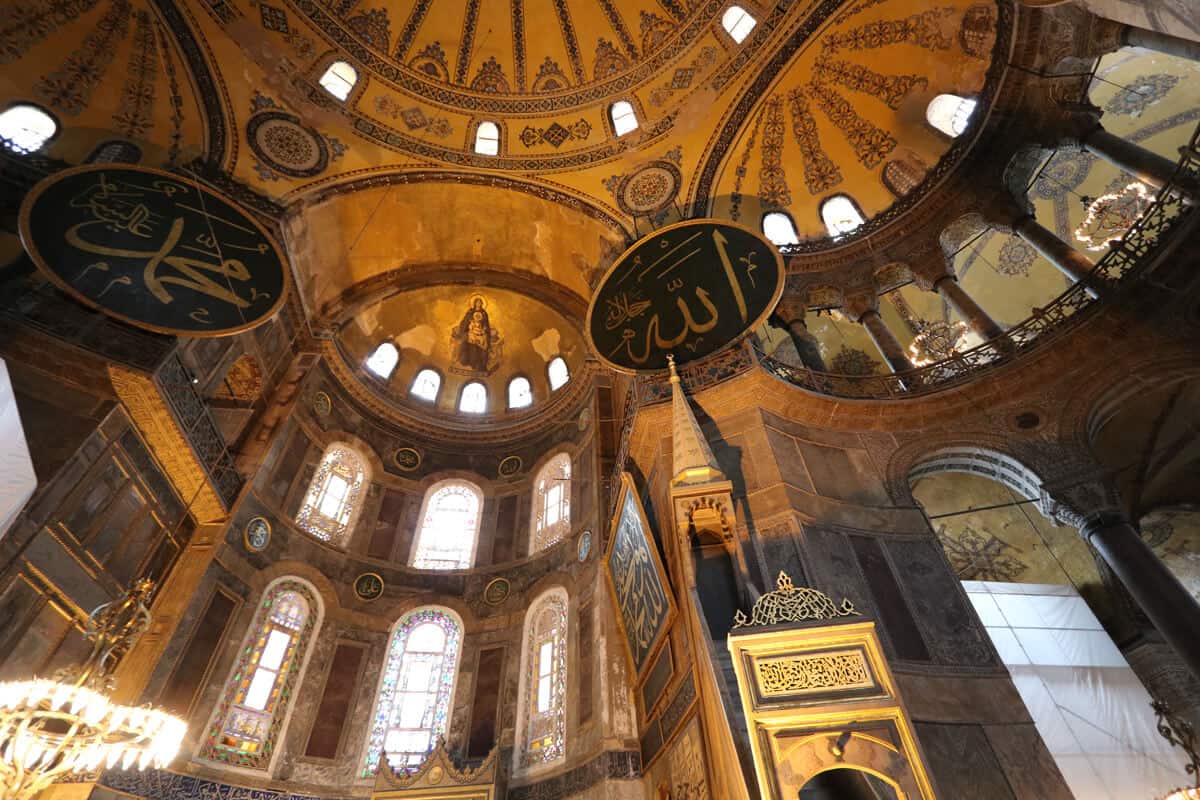
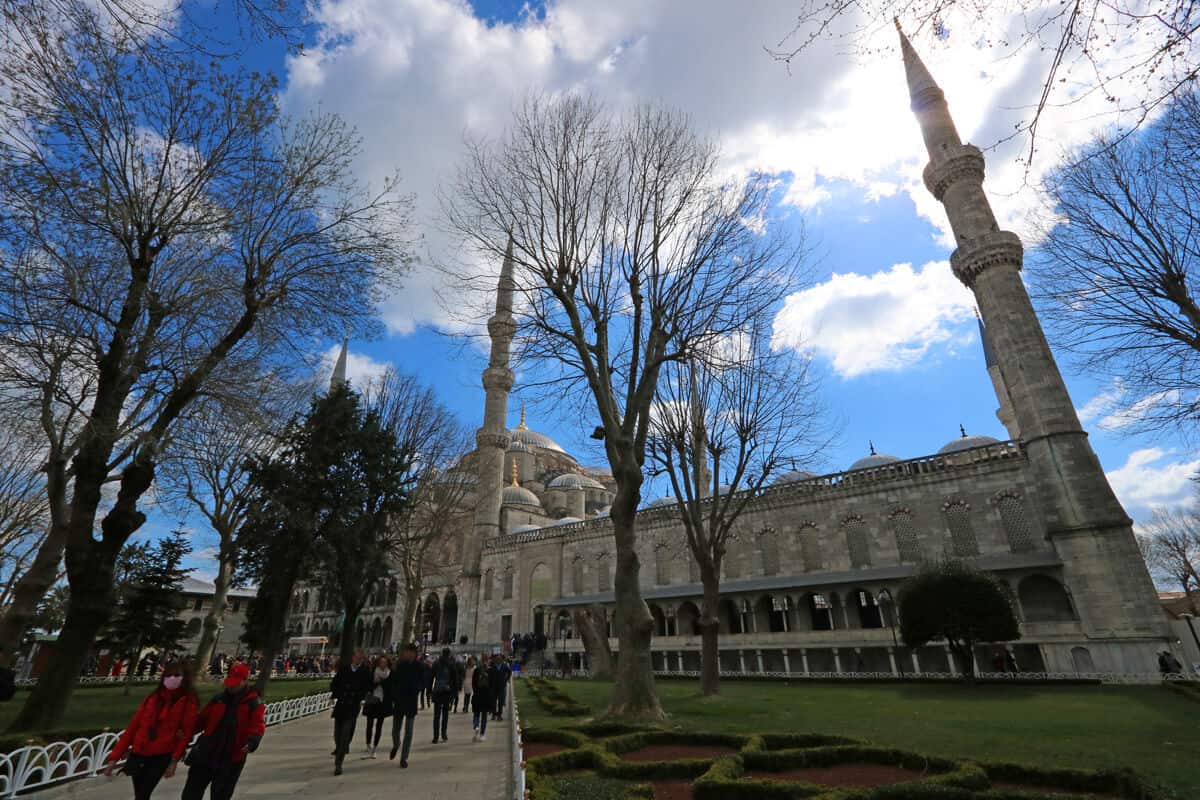
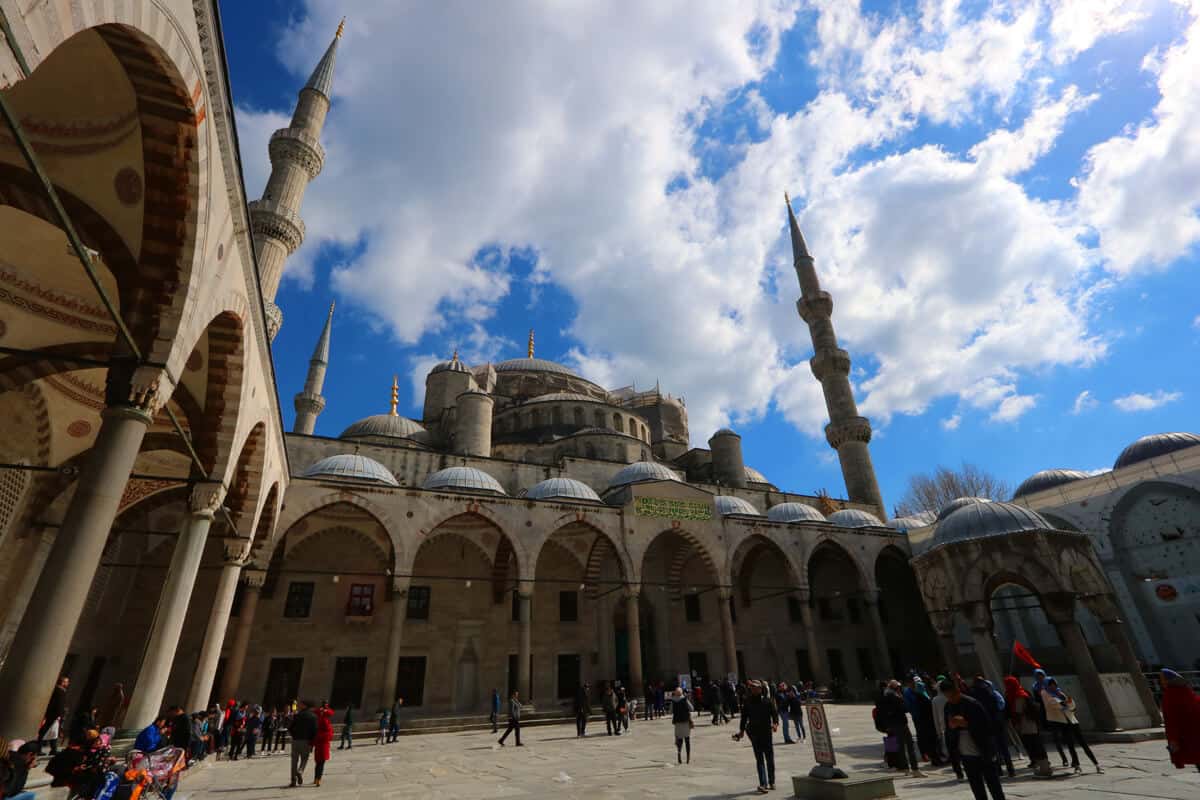

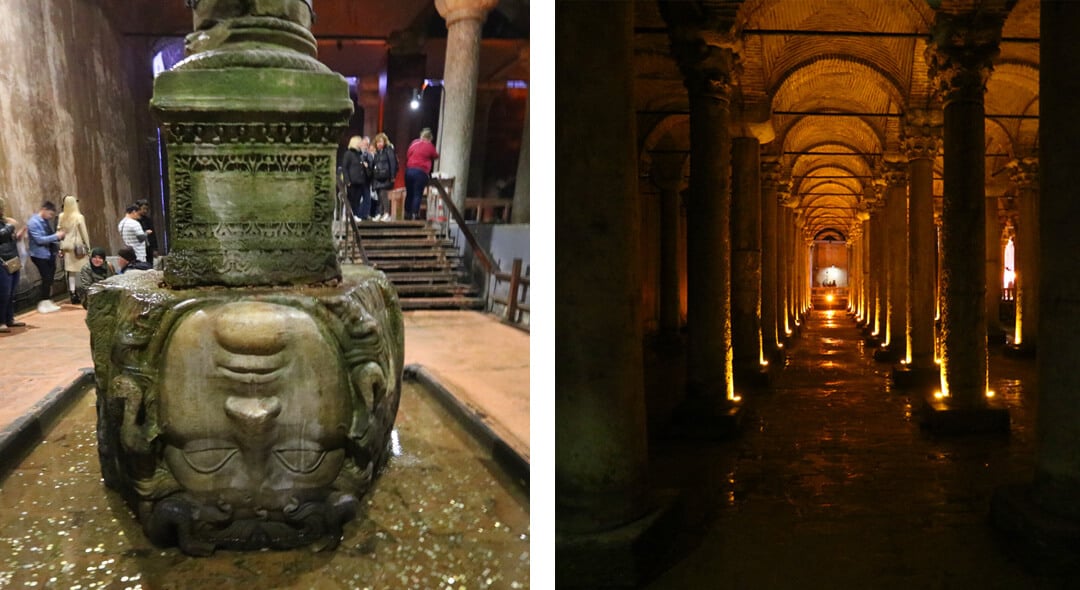
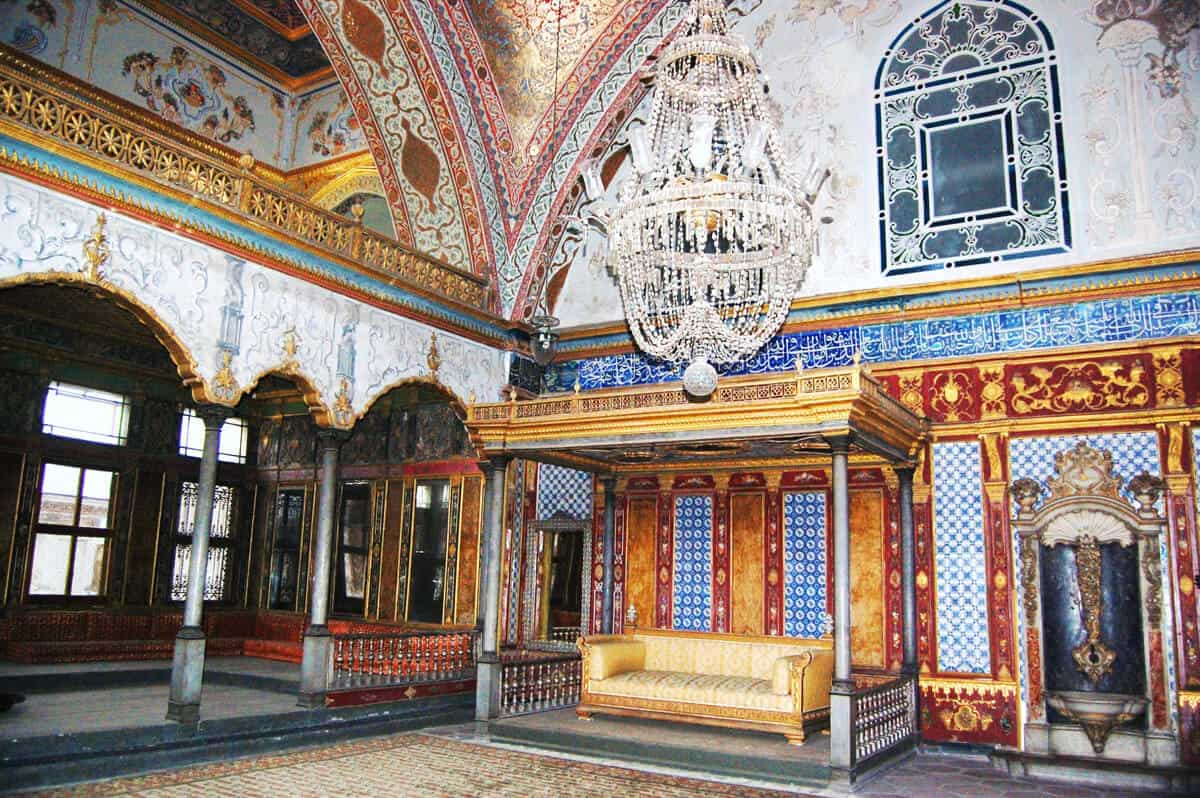
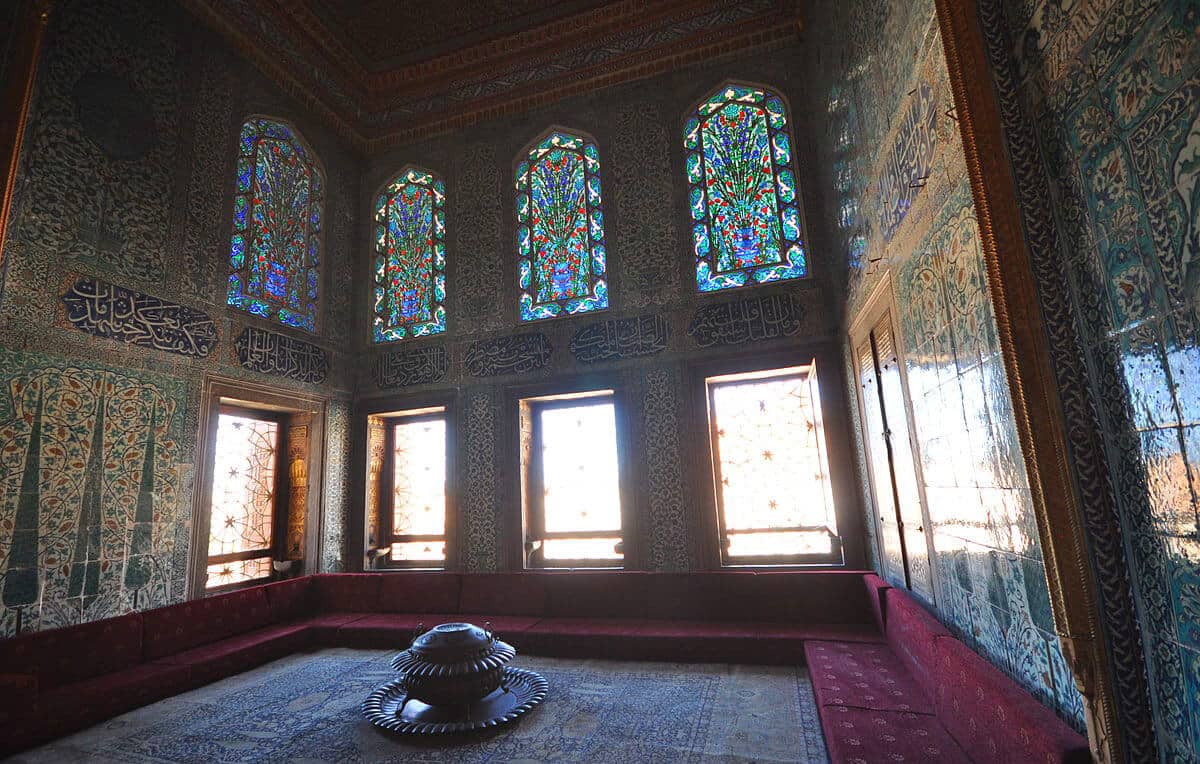
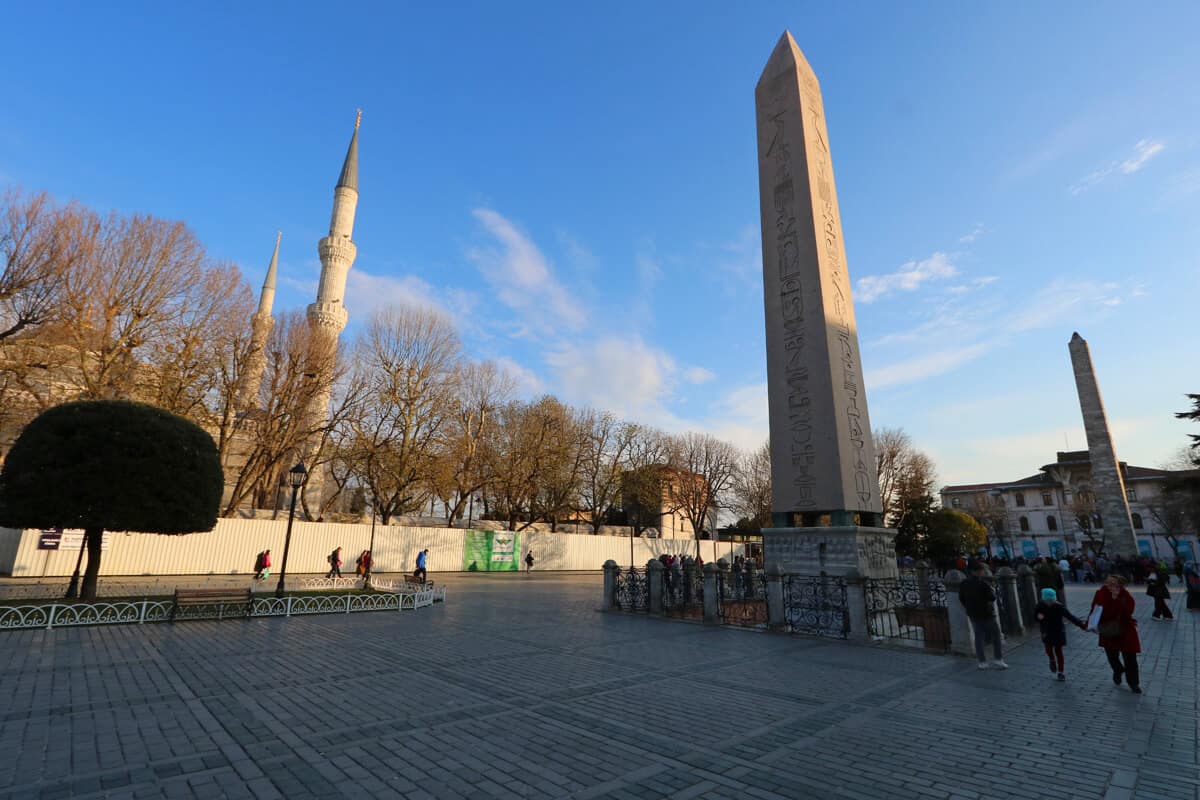
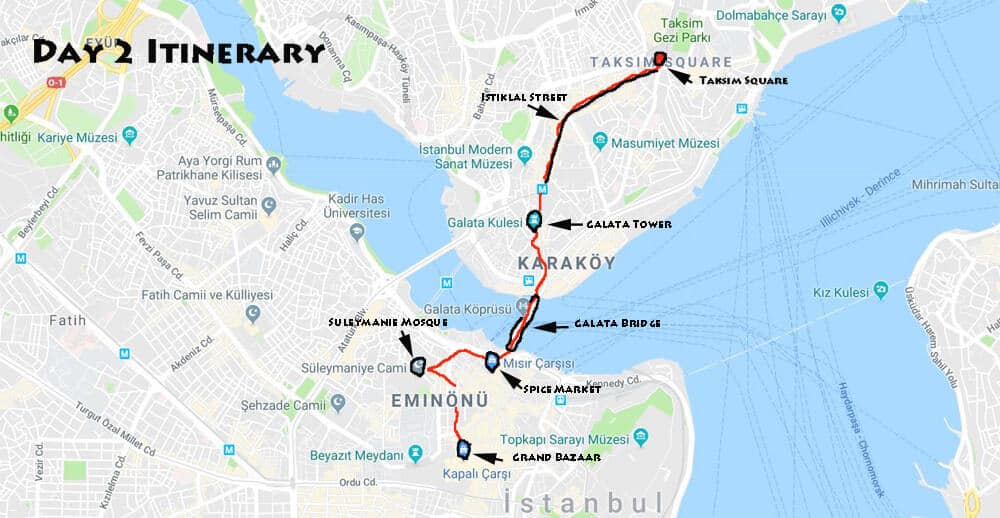


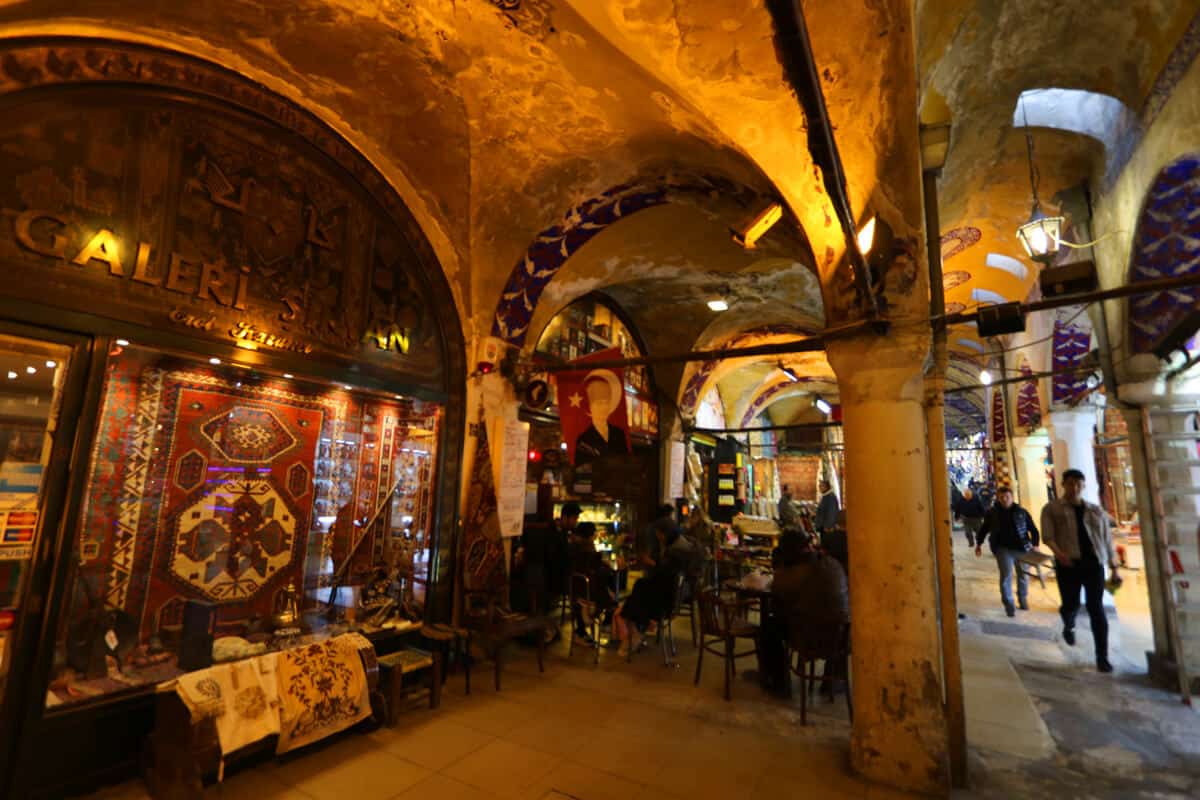
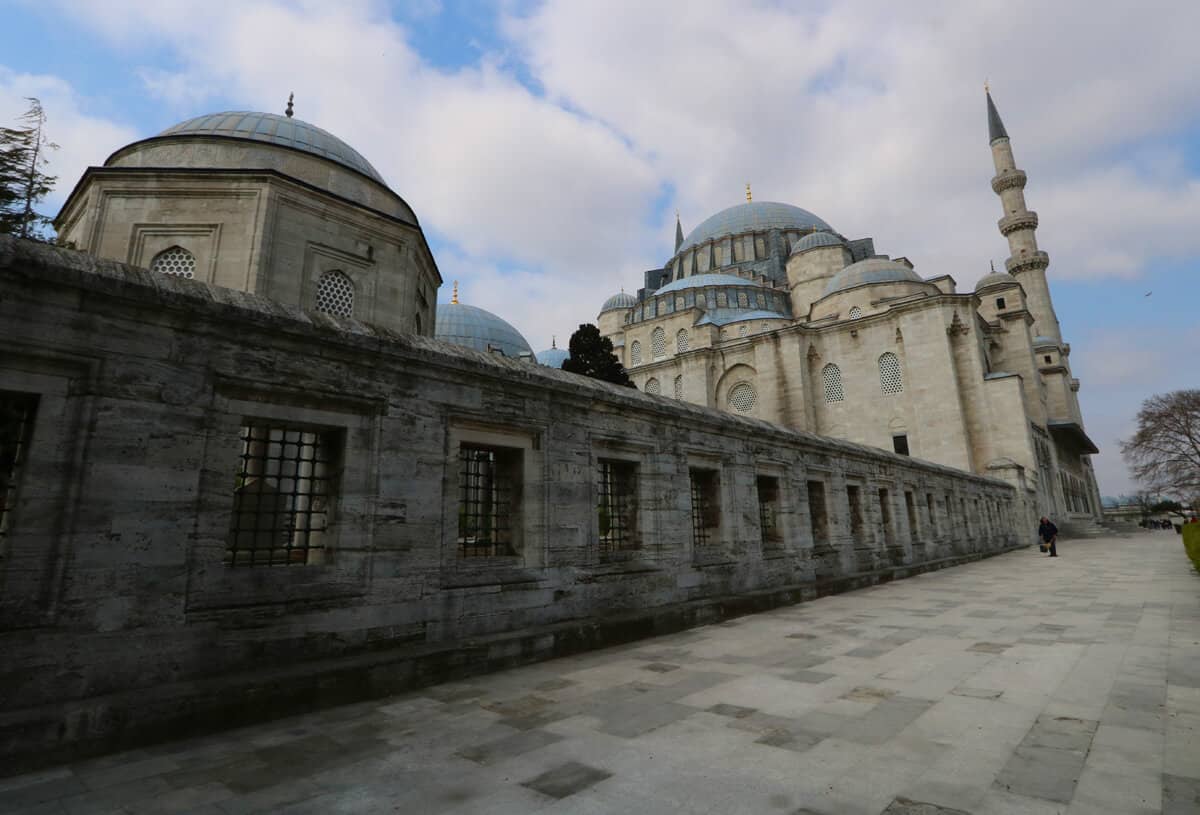
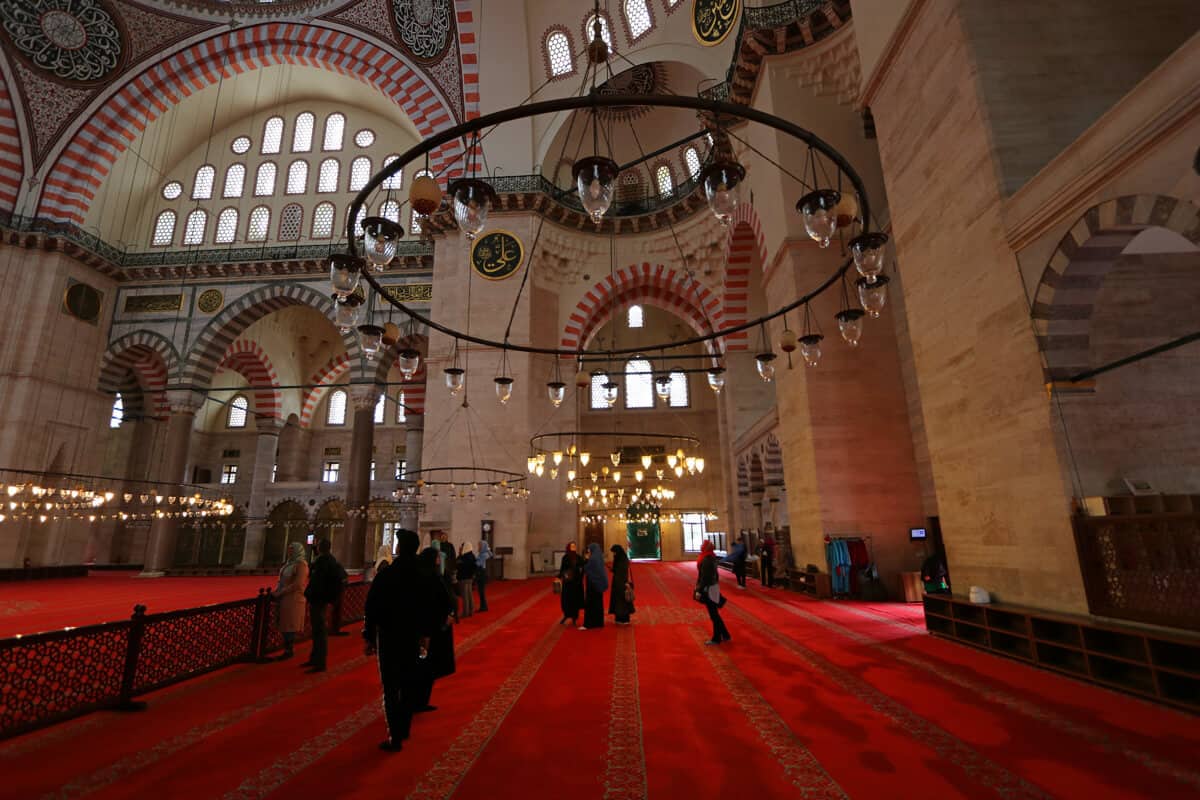
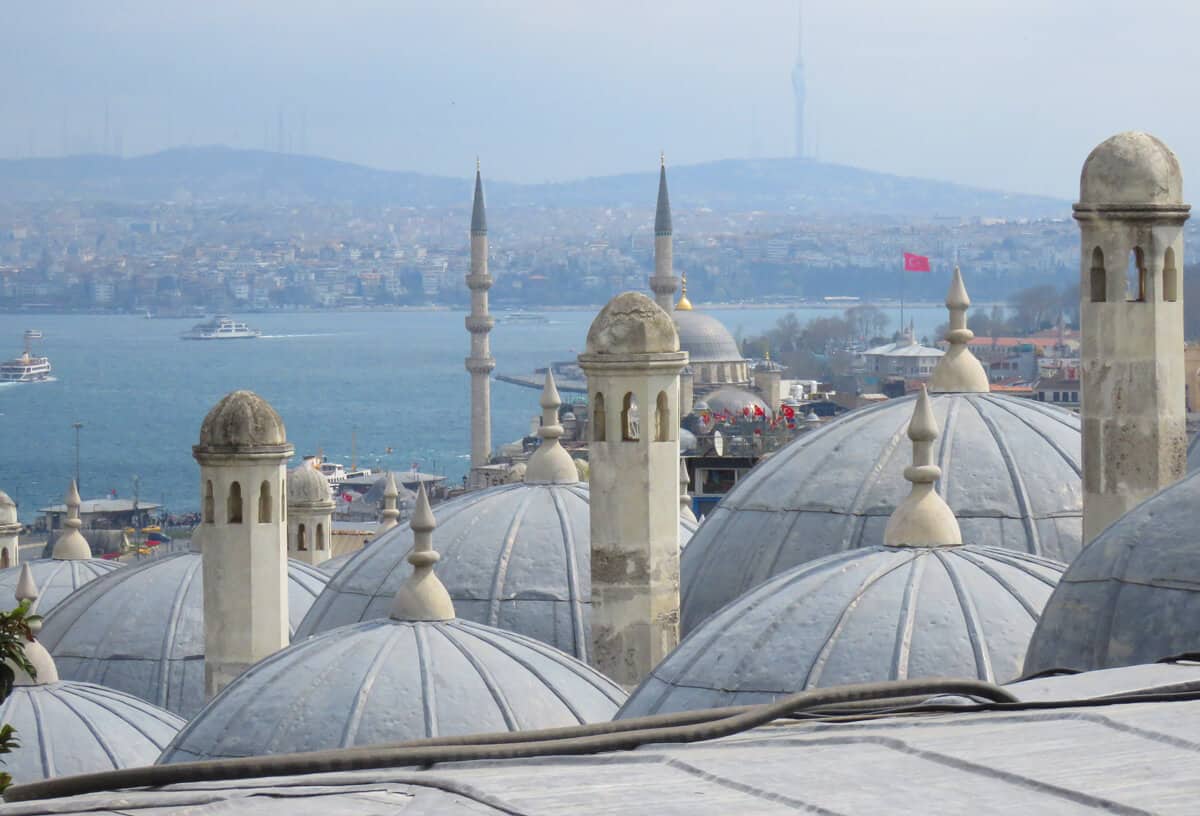
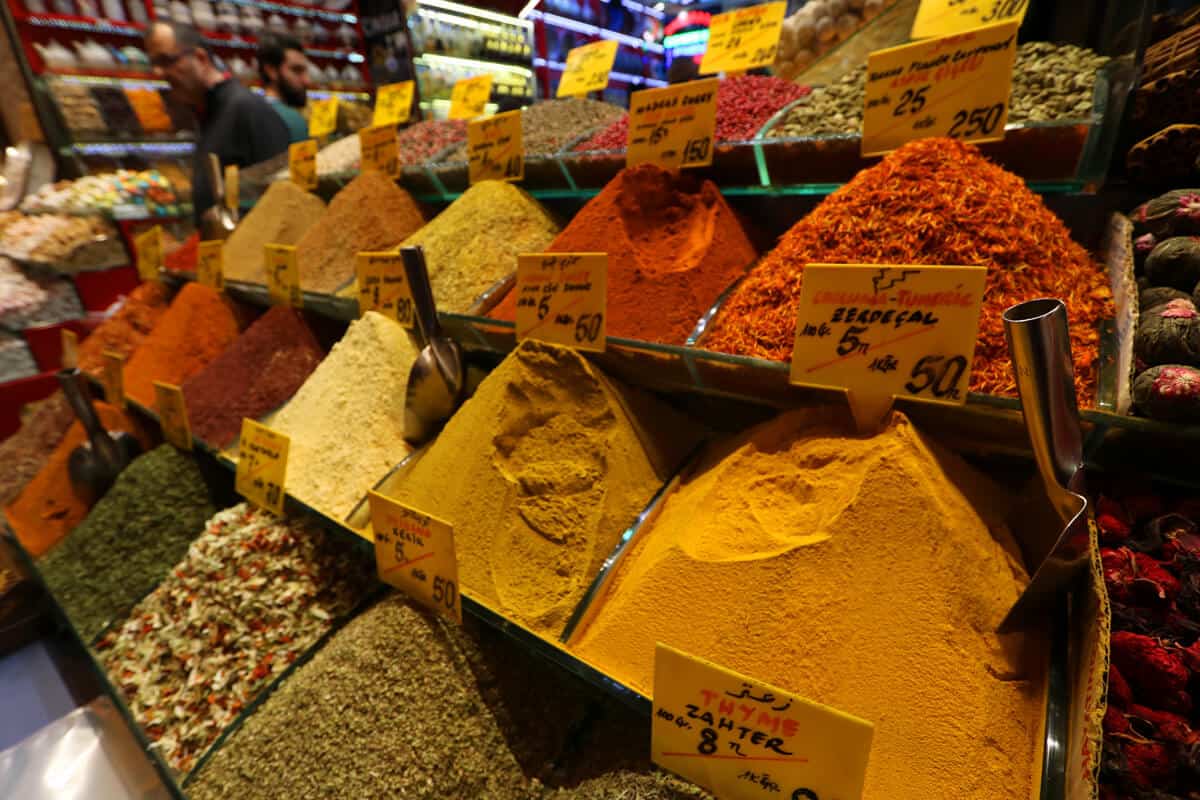
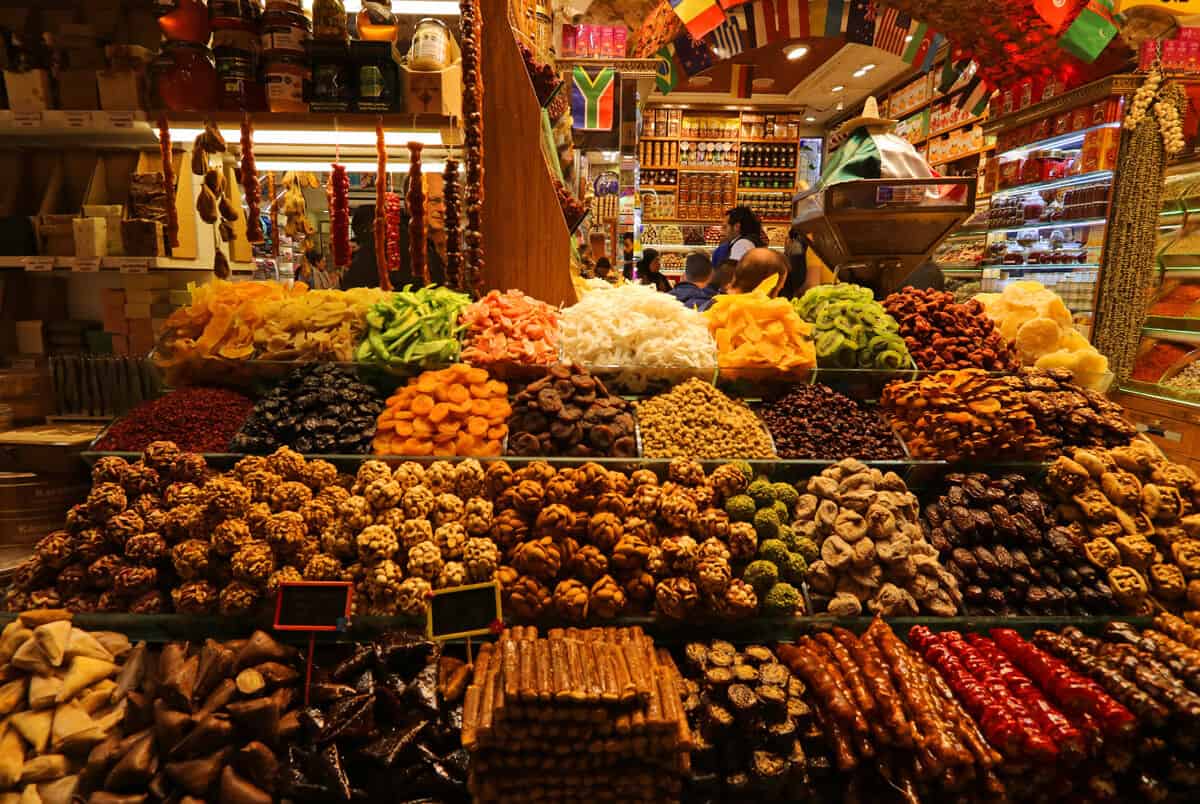
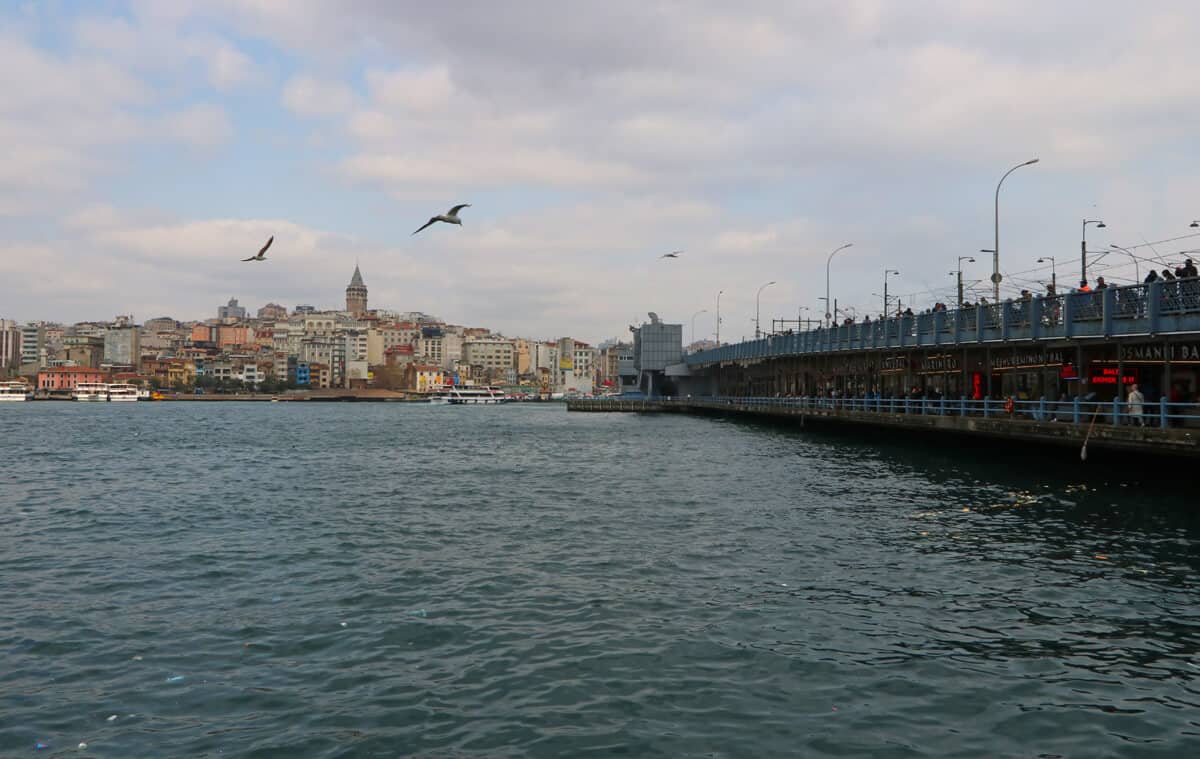
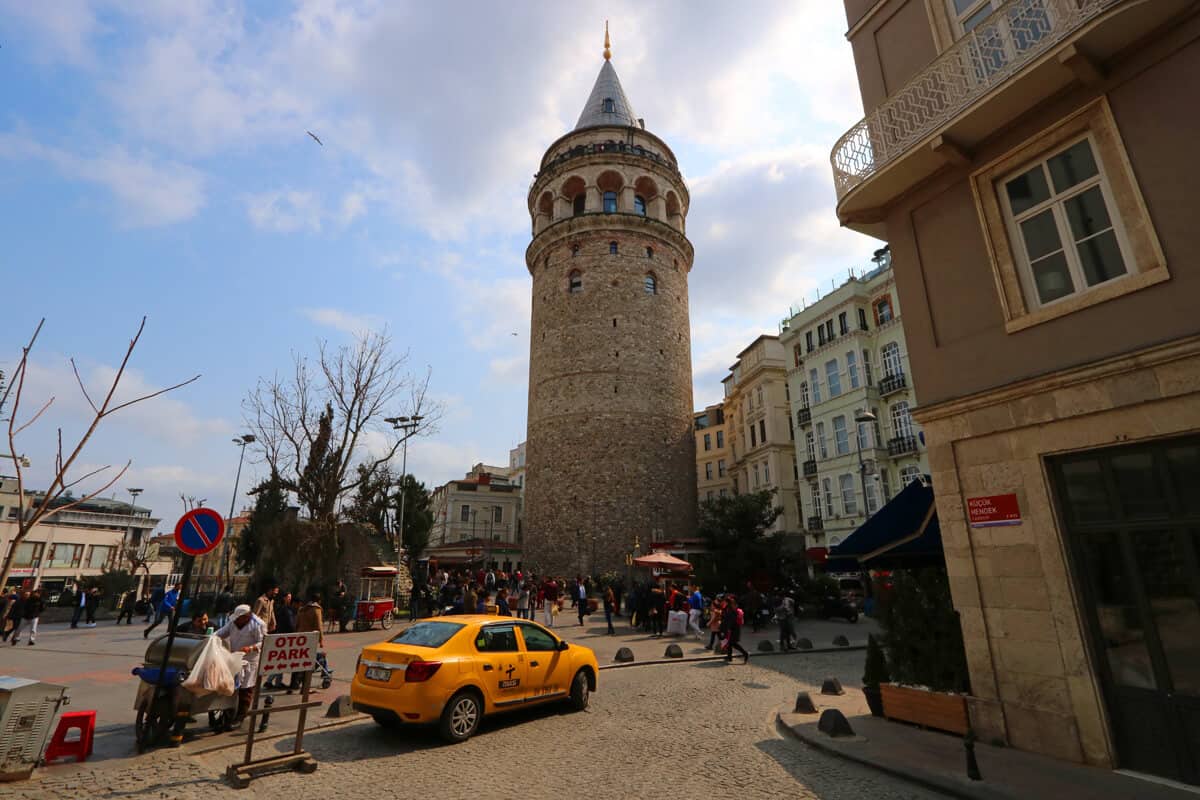


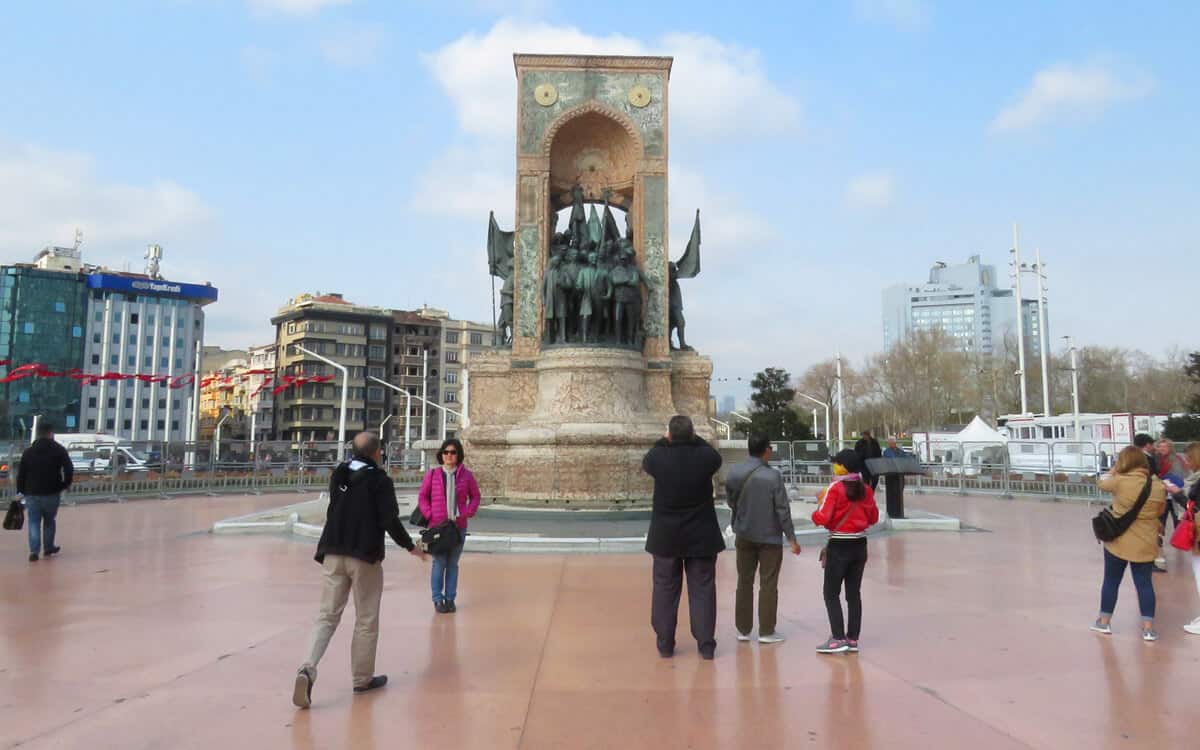
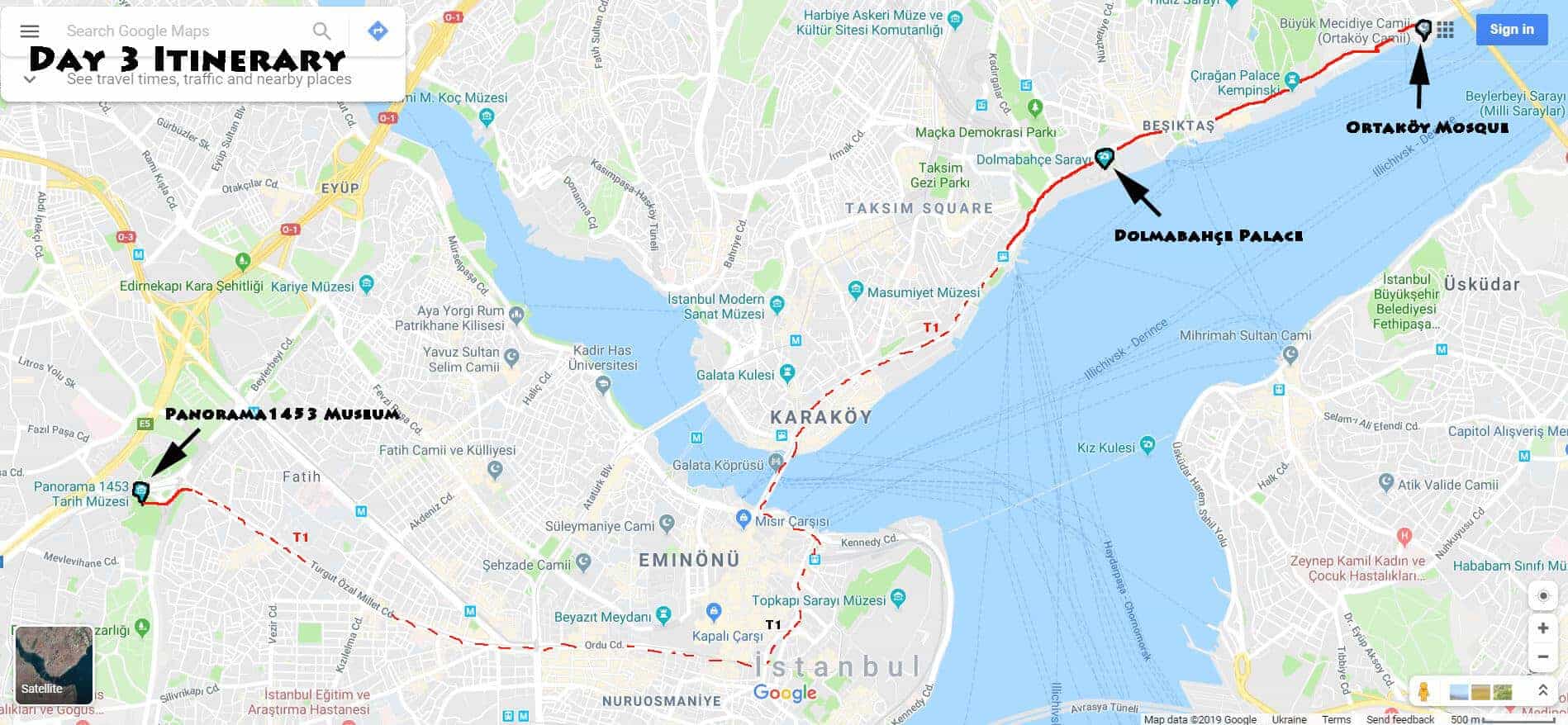
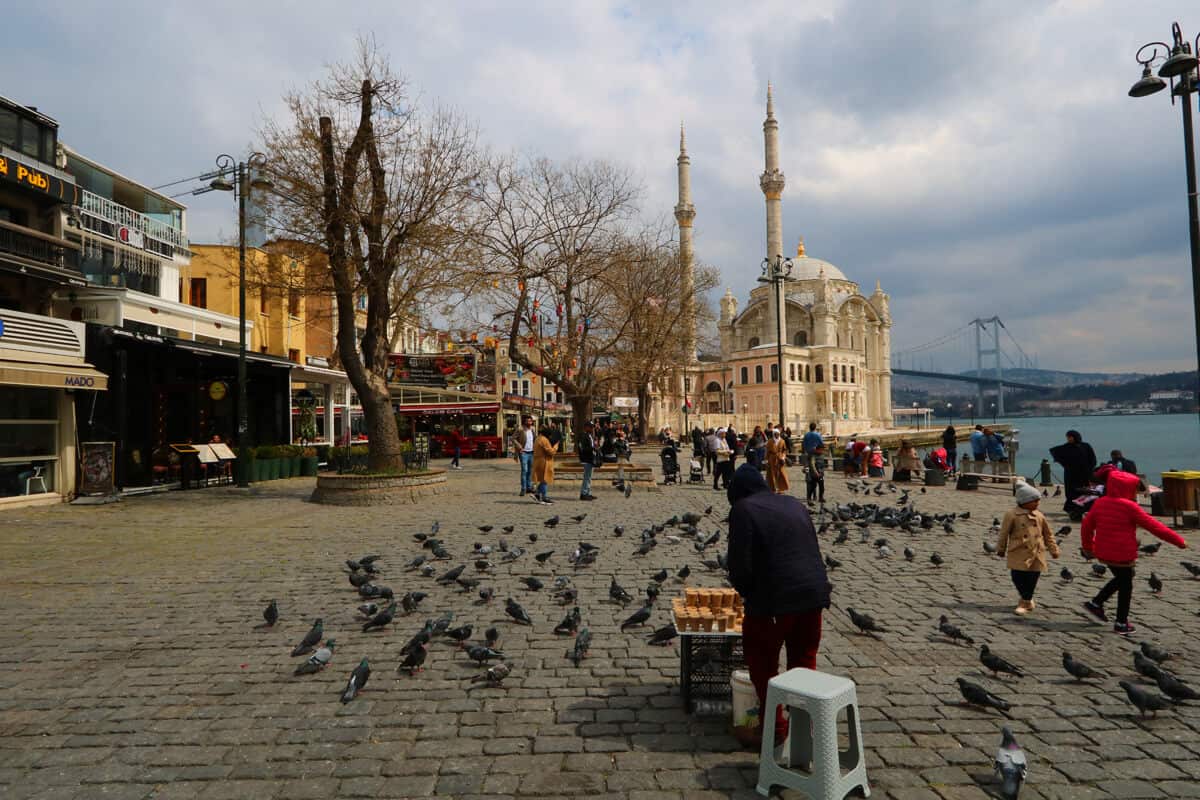
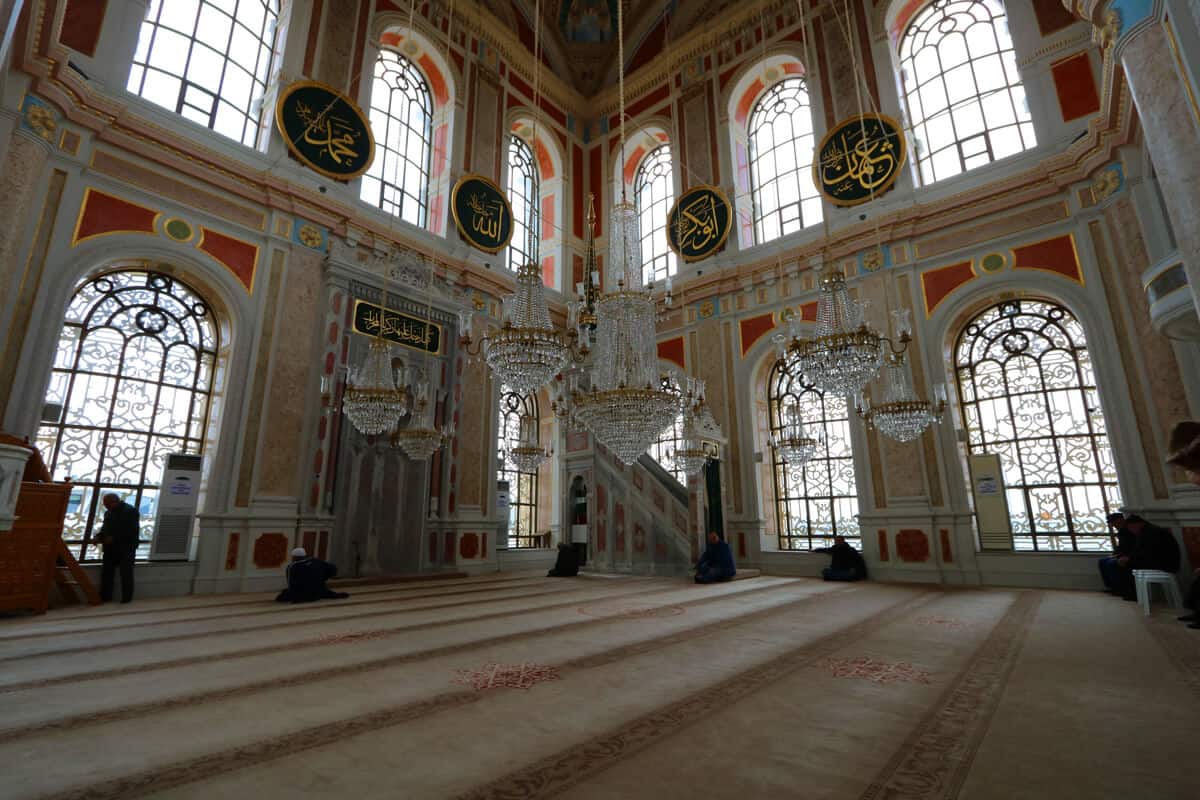
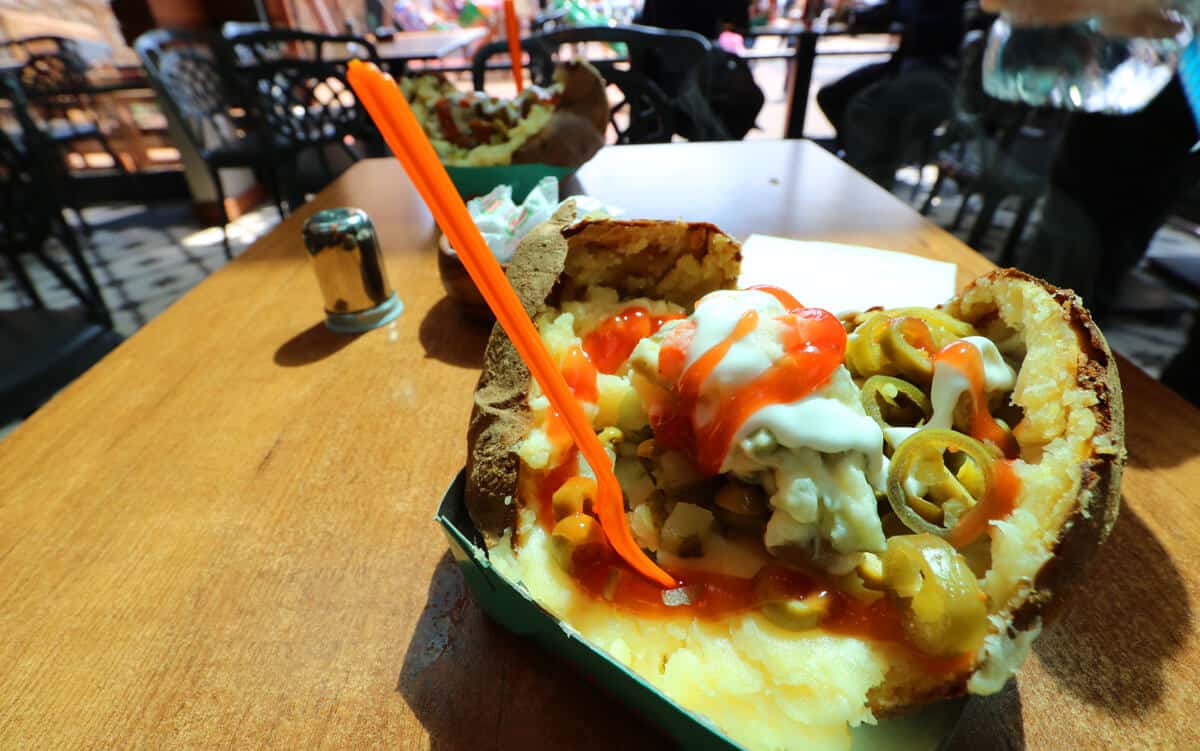
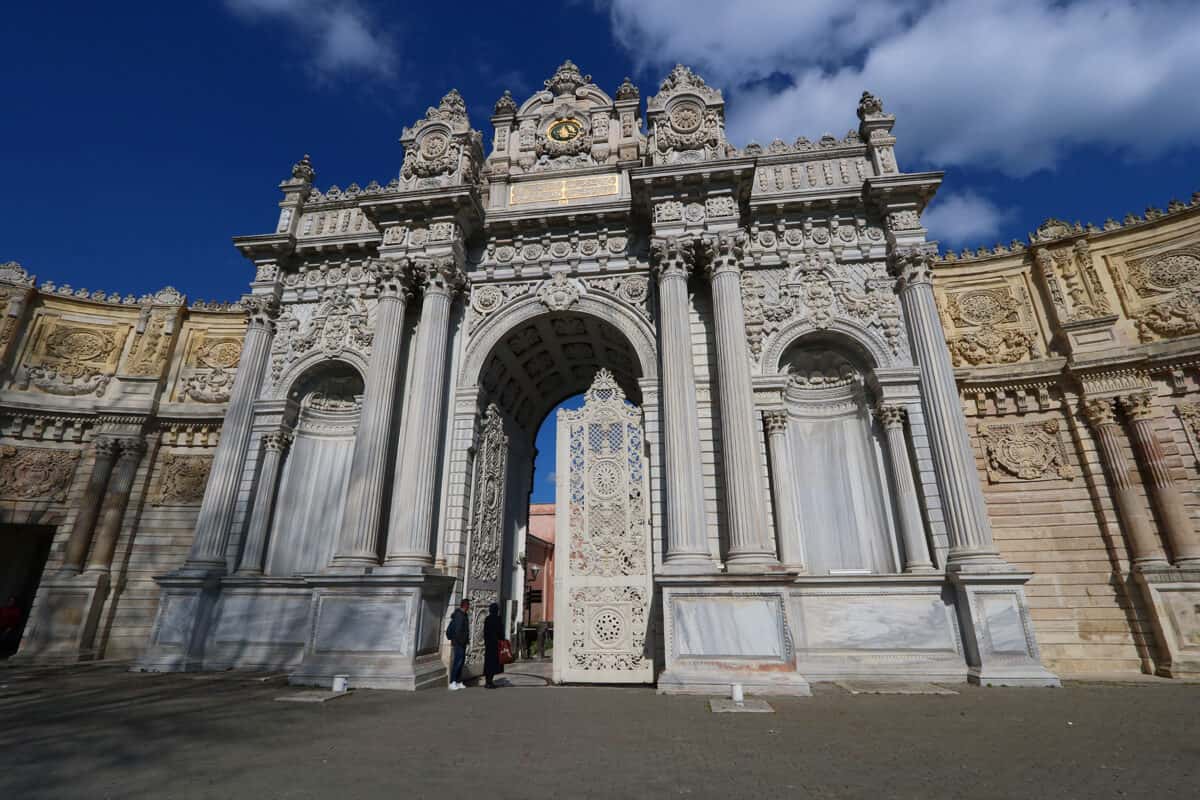

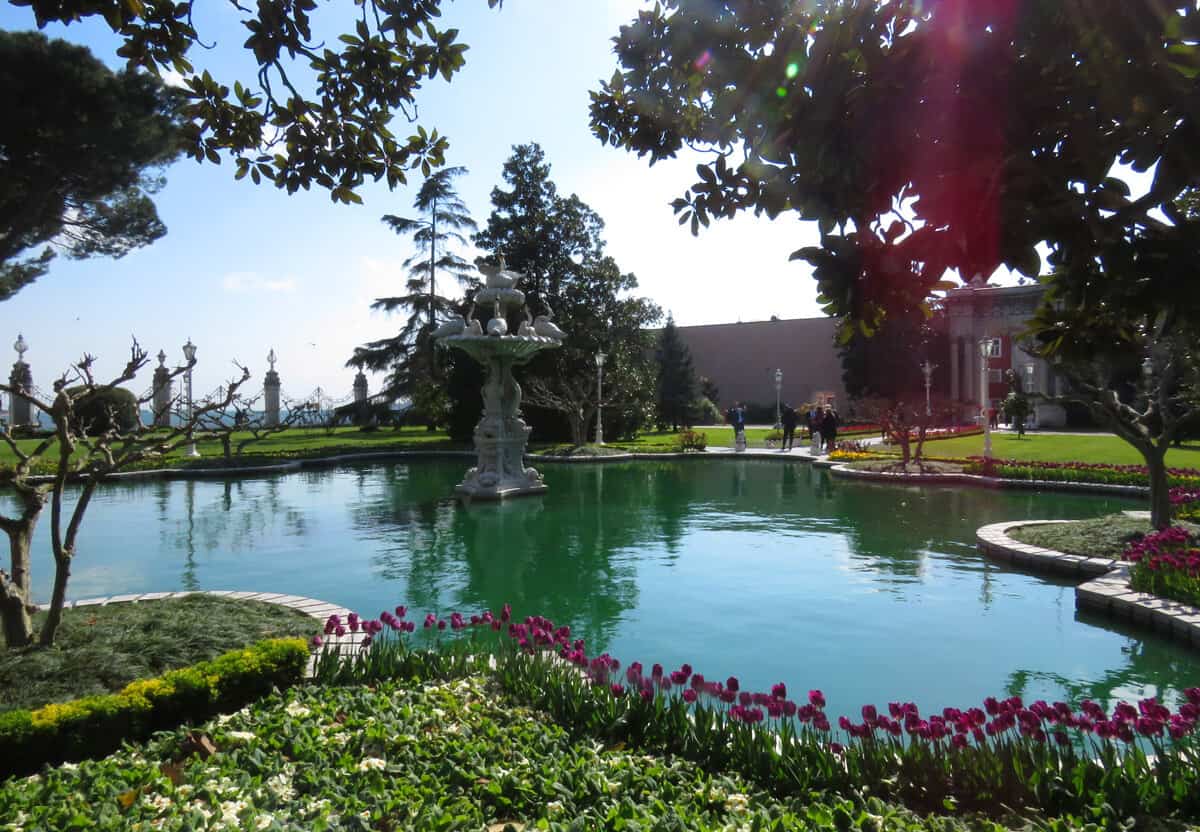
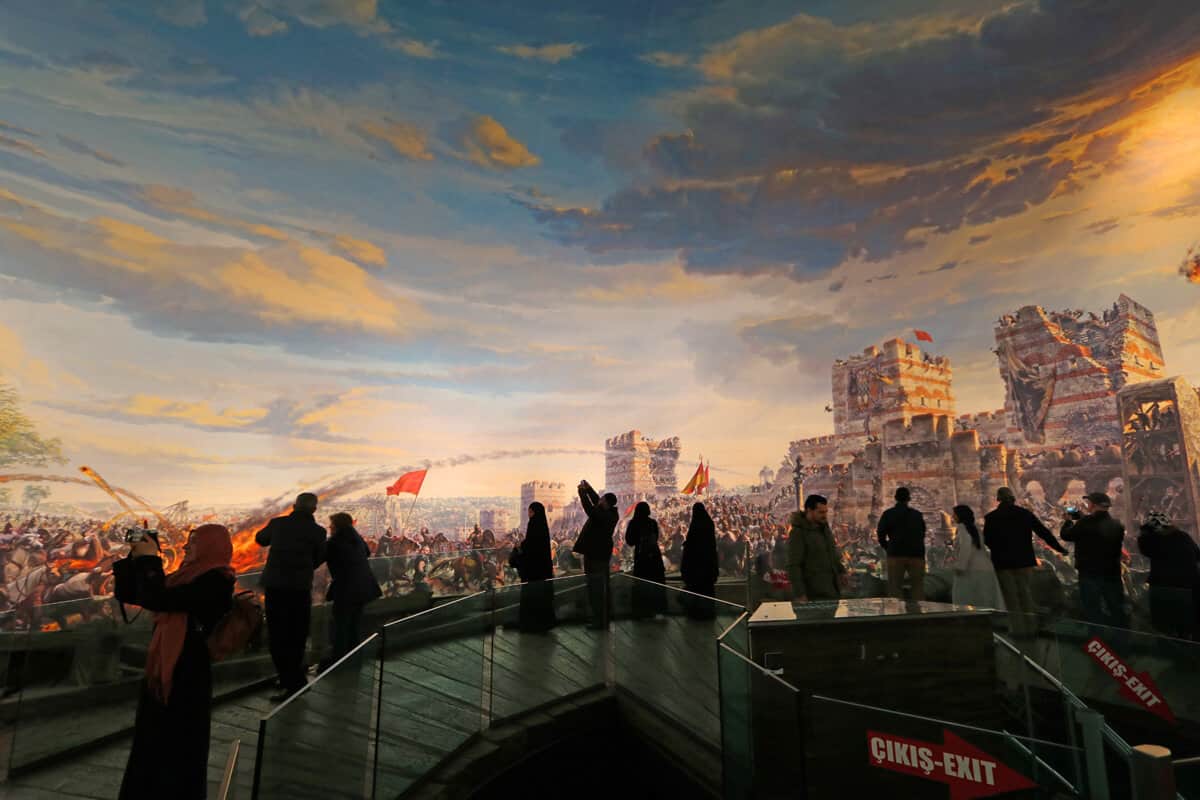
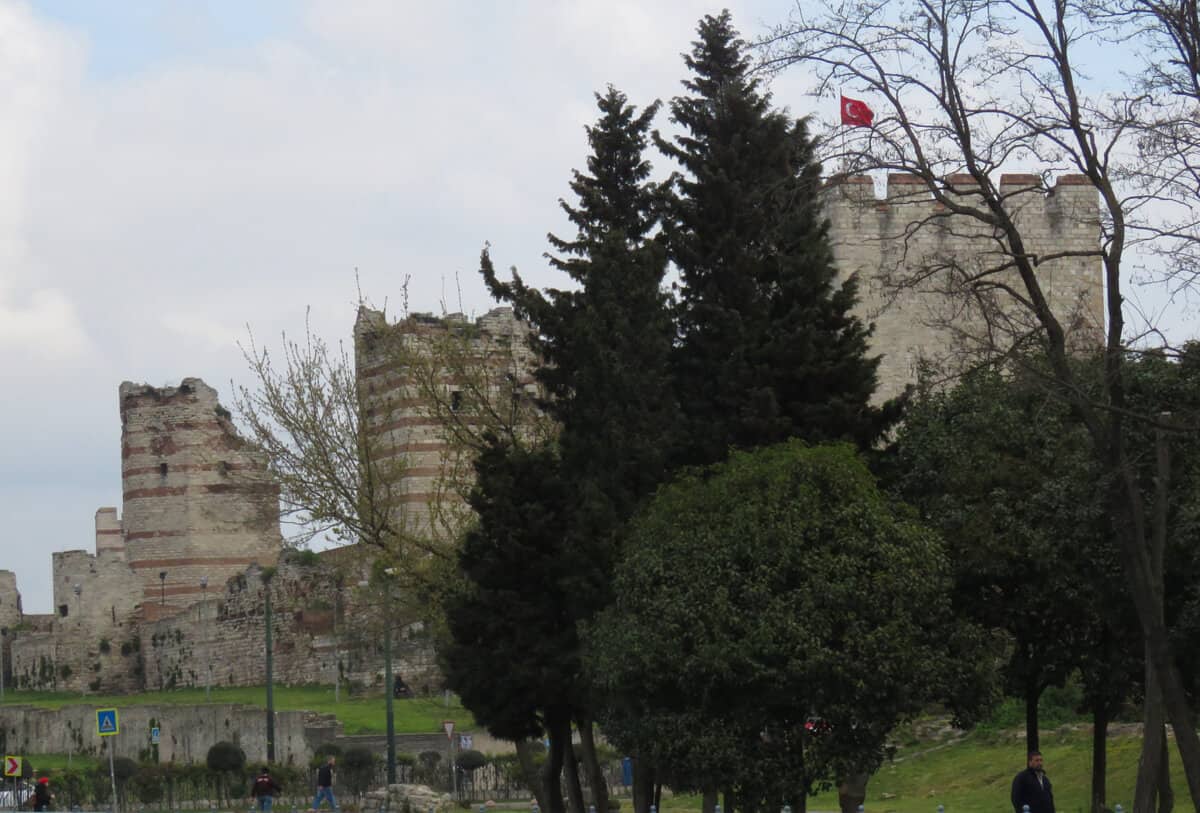

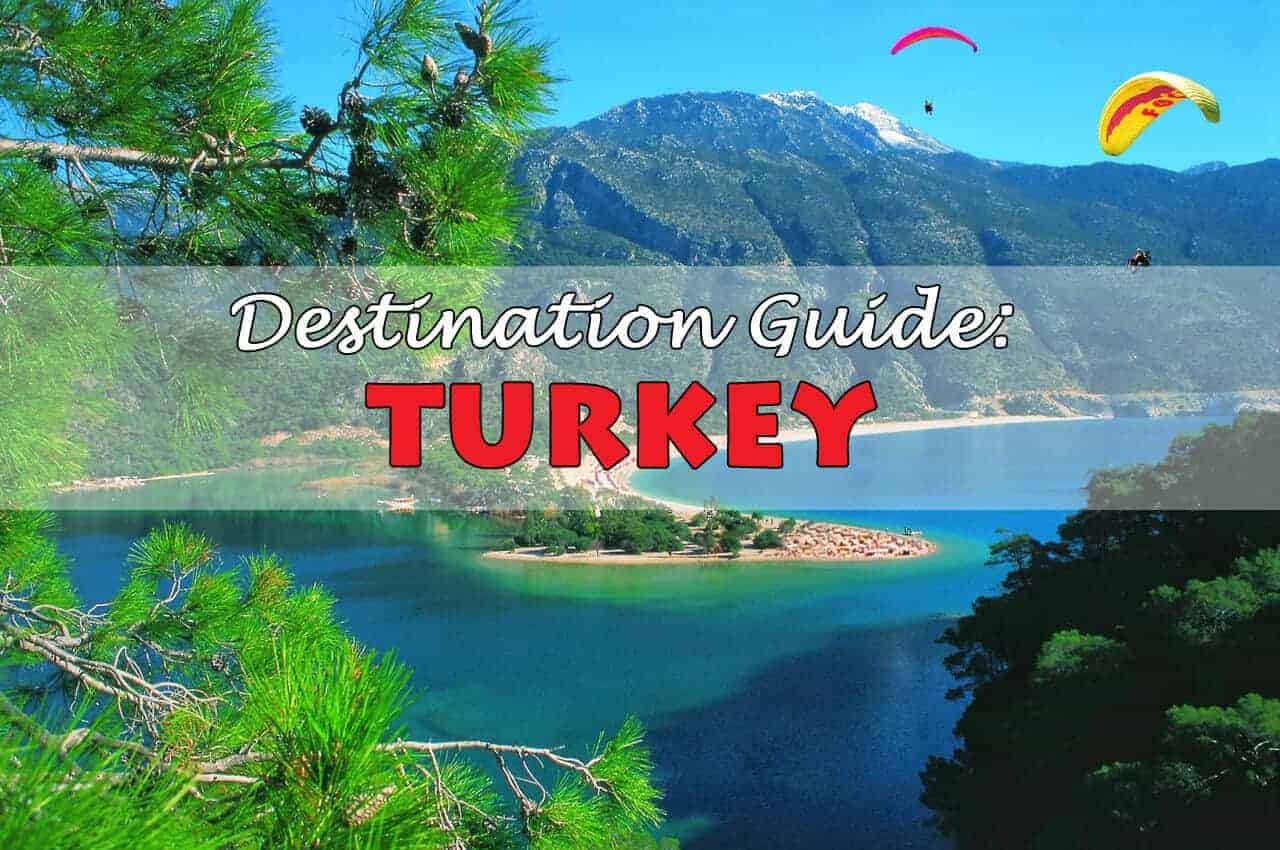
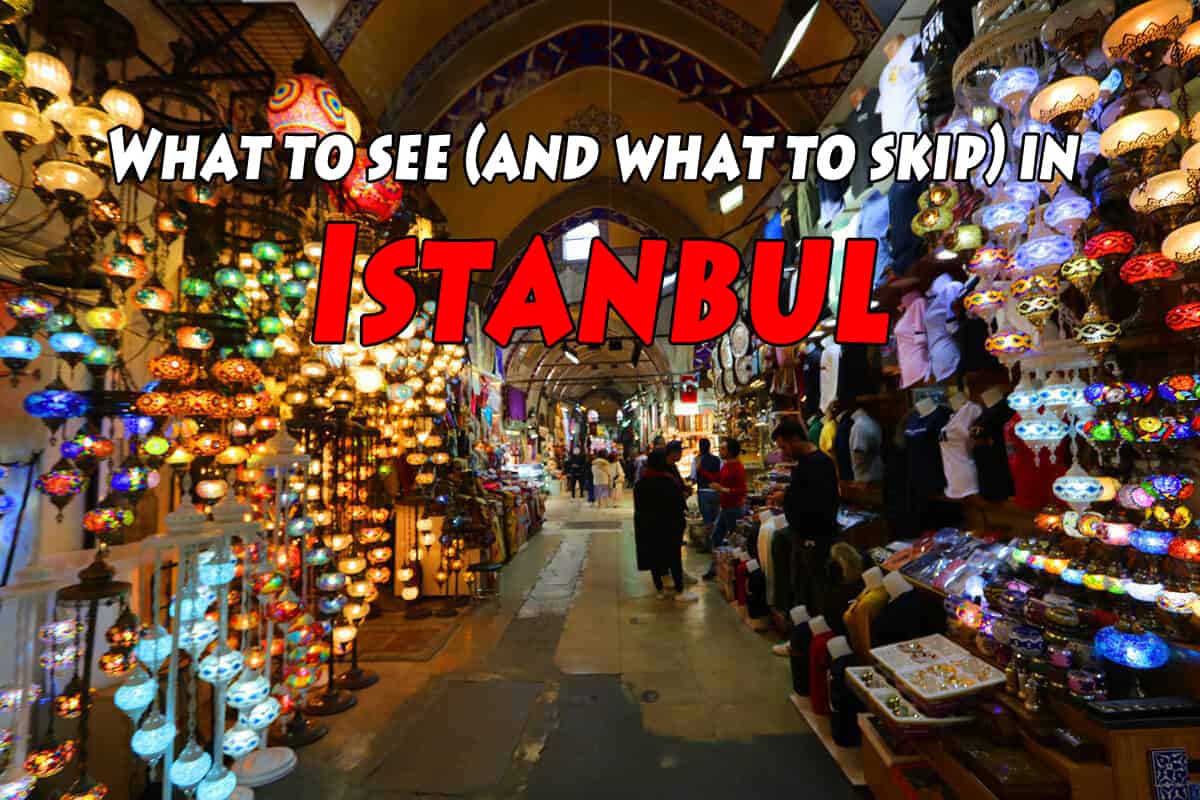
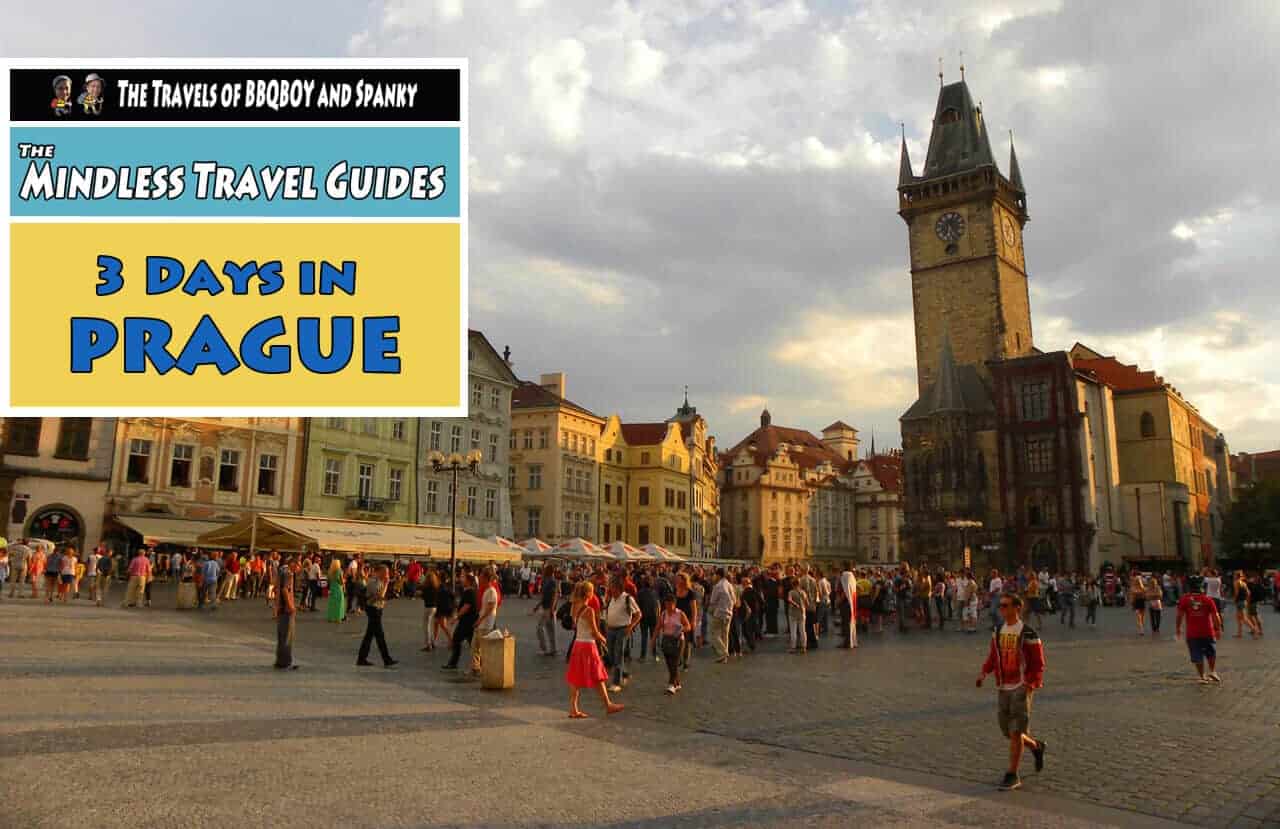
Great post as always and just on time, we will be spending 4 days in Istanbul and the information is gold. I have a question, in Split do you need a car to go to different places or is walkable and the car is going to be a problem, our hotel is in the middle of the Old Town and I suppose parking is an issue, our group can walk but some of the ladies have problem with long walks, should we use UBER/taxy, use our car or rent the car when we are ready to leave Split? (going to Zadar). Thanks
Hi Carlos,
You don’t need a car in the old town…it’s very, very compact. You can’t even take a taxi within the old town. If you need a taxi (to go outside the old town), take Uber or GoGreen (for example, if you want to go to Bacvice from the Old town. Usually a 15 min walk).
But absolutely, rent the car when leaving Split. And if you can go see Omis (30 min) and Makarska (about 1 hr).
Let me know if you have any questions and make sure to have a look at my Split Guide.